Design with color
We are going to use different colors to distinguish cards and different materials to distinguish secret cards+story cards and functional cards.
Two different design:






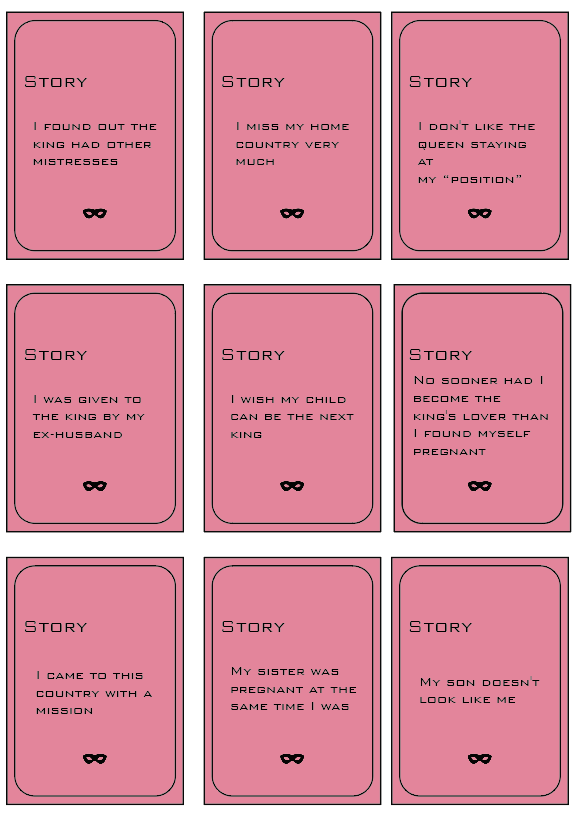
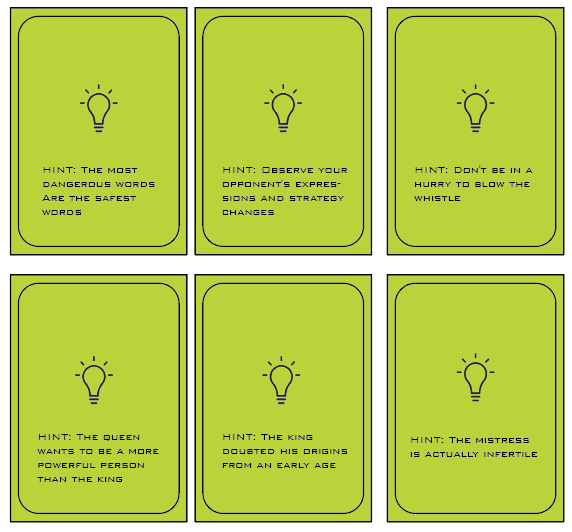

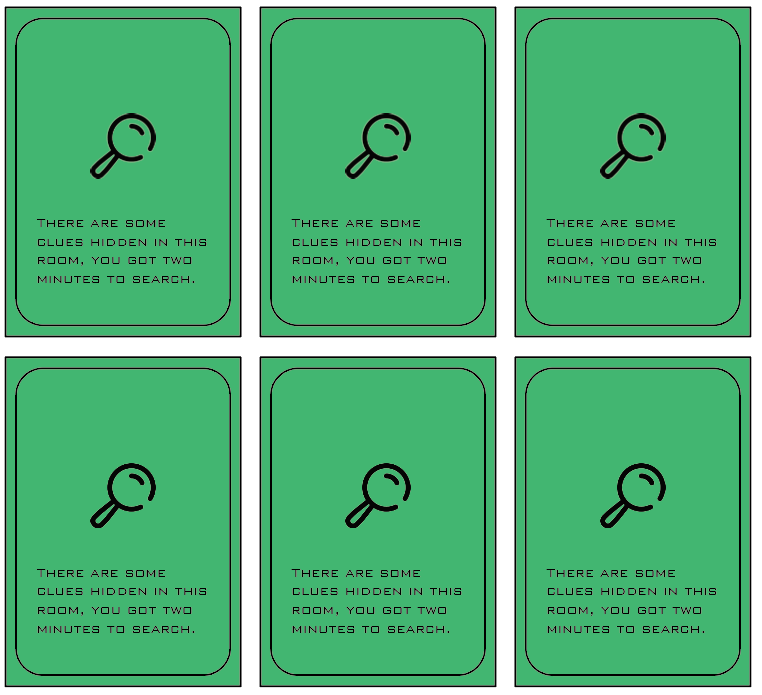
other
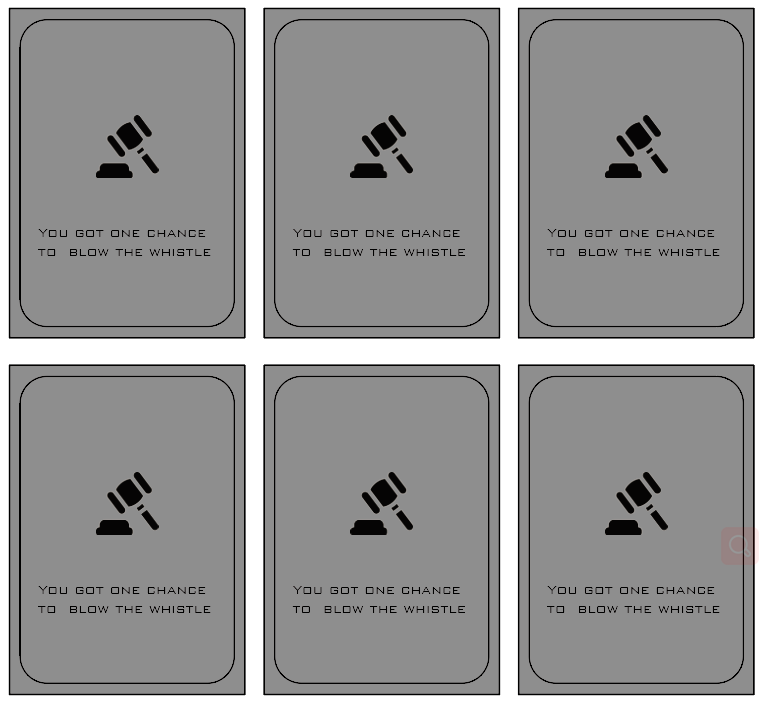

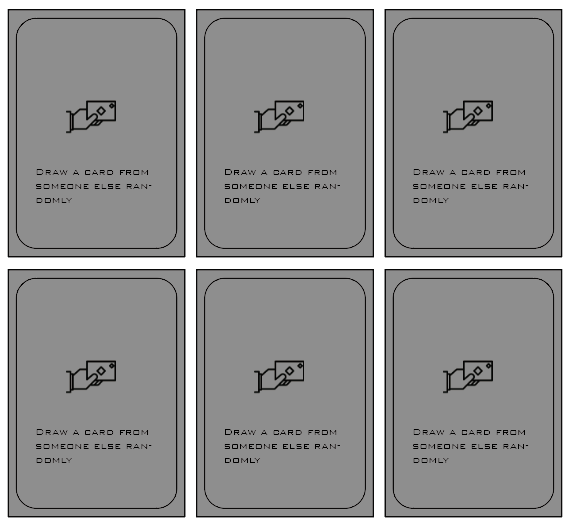
Making process
Steve Swink - Game Feel, Chapter 1
However, the metaphor of a conversation between human and computer doesn’t fit all situations. Real-time control is not like a conversation. It’s more like driving a car. If a driver wants to turn left, it’s more action than thought. He turns the wheel in the corresponding direction, using what he sees, hears and feels to make small corrections until the turn is complete.Game Feel as an Extension of the Player’s Identity When perception extends into the game world, so does identity......Game designer Jonathan Blow calls this “proxied embodiment ”—identity extends to some kind of proxy, inhabiting it and making it part of one’s own body.
A classic example was given by Matt Armstrong. He said that during playtesting, players often felt that their characters were "not fast enough." What they found was that it wasn't actually not fast enough, it was that they "felt" fast enough. Their last resort was to put more references next to the path to accentuate the sense of speed rather than simply adjust it. Time, speed, balance of control and rhythm of music are all important. Is it a success if the player is invested in the game and brings themselves into the characters and behaviors?
The operation mechanism of game emotion is expressed as follows: game mechanism -- the mechanism of packaging virtual elements -- events on fictional level -- emotion -- experience. Just as an experienced chef can taste the flavors of a hearty meal, or a musician can distinguish chords, beats, and rhythms in an orchestra, a game designer must be able to sense fleeting emotions like anger, joy, or disgust. "Because those emotions are what games are all about." Sensing and understanding subtle emotions is a design ability. The designer must be aware of the emotional curve of a player as they play the game, where the design can be frustrating, where the design can have flow gaps, and where the emotional shifts can be abrupt. These need to be polished bit by bit, in design iteration, player testing to use their keen emotional perception ability to try to solve. Whether the game is based on a narrative or the experience itself, we need to explore the game from the perspective of the recipient, and explore the emotions that can be triggered.
Summary
To answer the question of what game feel is, we started with a basic definition of
game feel:
Real-time control of virtual objects in a simulated space, with interactions
emphasized by polish.
Using the three building blocks encompassed in this definition—real-time control of
virtual objects, simulated space and polish effects—it’s possible to create great-feeling games.
Katherine Isbister - How games move us
‘choice’ and ‘flow.’
Katherine examines how game designers use ‘choice’ and ‘flow’ to trigger certain emotions of the player. The use of avatars, character customization and non-player characters in solo play situations enable game designers to impact the emotions of the players.
‘Chance,’ for example, displays the most fundamental difference between games and other kinds of media because players have the chance to influence the outcome of a game through their own actions. In contrast to watching a film, one is able to immediately control what is happening. Isbister connects this ability of taking influence with an enhanced emotional response by the player. Being responsible for certain outcomes of a game can result in a variety of feelings like joy or anger
The second chapter continues the theories from the first and develops them from solo to social play situations. Coordinated action, role-play and social situations are the three main design techniques that enable the player to experience group dynamics within a game. Initially, the author discusses the stereotype image of the isolated, addicted and antisocial gamer. She mentions the fact that most of the people playing digital games play together with others. Arguing against these prejudices, Isbister claims that games rather engage people socially.